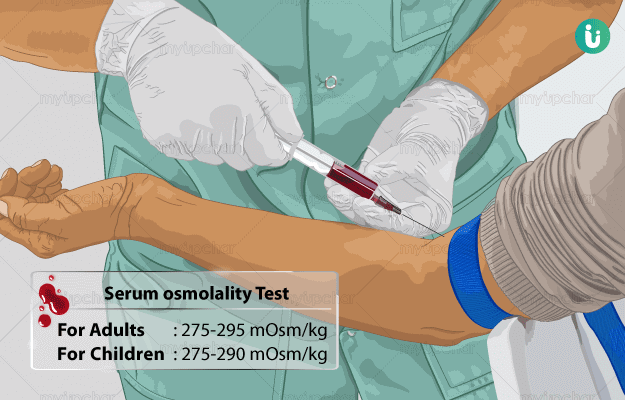What is Serum Osmolality test?
The serum osmolality test measures the concentration of dissolved chemicals and electrolytes (especially sodium) in your serum. Serum is the liquid part of the blood that is left after removing blood cells and clotting proteins. A perfect water-electrolyte balance is important to maintain homeostasis in the body and for body cells to function properly.
However, blood osmolality changes according to the amount of water and electrolytes in your body including sodium, chloride, bicarbonate, proteins, and glucose. When the amount of water in the blood is less, the concentration of electrolytes (serum osmolality) increases, and vice versa.
Your body controls serum osmolality with the help of a hormone called antidiuretic hormone (ADH). Every time you are dehydrated, it produces ADH to prevent the loss of water through urine.
On the other hand, if you consume a lot of water, the serum osmolality decreases and your body stops the release of ADH to promote the expulsion of excess water in the urine and restore the osmotic balance.
Some chemicals like ethanol and certain toxic substances such as methanol, isopropyl alcohol, ethylene glycol or propylene glycol can also be detected in the blood with this test.














